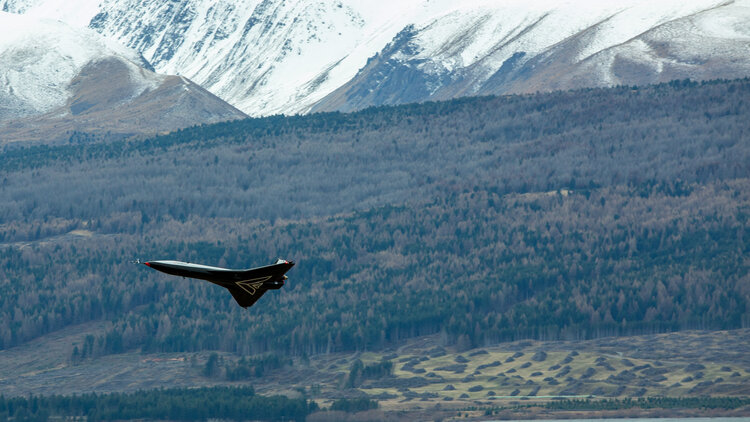Mk-II Aurora Divulgação/Dawn Aerospace
space
Technology
/ Oceania
to go to space
Reusable "suborbital" aircraft completes five test flights
By: Gabriela Ramos
On: 9/11/2021

Mk-II Aurora
Divulgação/Dawn Aerospace
Dawn Aerospace, a company specializing in space aircraft for suborbital flights that has been looking to develop reusable space planes, recently completed five test flights of the Mk-II Aurora, its prototype suborbital space plane.
The prototype flights were carried out between 28 and 30 July from New Zealand and reached an altitude of 1,036 meters. The tests sought to analyze the structure and aerodynamics of the aircraft.
Currently, a liquid-fuelled rocket engine developed by Dawn Aerospace is also being tested and will soon be used to replace the jet engines used today, its creators believe. With the new engines, these aircraft could fly at supersonic speeds and perform suborbital flights, that is, they would fly above the Kármán Line, 100 km above the sea - according to the company.
The designers intend the tests of the Mk-II Aurora to be demonstrators for the Mk-III, a two-stage spacecraft for orbit. The company's objective is to have a fleet of space aircraft, with several daily flights, allowing travel time to be greatly reduced compared to conventional ones. As a result, Dawn Aerospace plans to become the first airline to launch the same aircraft into space multiple times on the same day.
At the end of the tests, the company's objective will be to bring together other companies that have the objective of operating commercial supersonic flights and space travel, such as Boom Supersonic, which is currently testing its XB-1 aircraft, and Virgin Galactic, which recently took Richard Branson , the company's founder, on a suborbital voyage aboard SpaceShipTwo and, in addition, also plans to offer commercial space tourism flights soon.
Dawn considers it to be doing this as sustainably as possible, with reusable technologies: rocket-powered aircraft that are capable of operating like a fleet of conventional planes, landing and taking off horizontally at airports. Stefan Powell, CEO of the company, said in a statement that “Dawn is focused on sustainable and scalable access to space and our Mk-II vehicle is fully reusable”.
However, this will be a considerably expensive technology. Virgin Galactic, which will roll out its suborbital flights shortly after the first successful flight, forecasts a cost of approximately $250,000 (R$1.3 million).
But what is a suborbital flight?
This is a type of voyage in which the aircraft soars in space, but not high and fast enough to actually enter orbit for a complete space voyage - but just high enough for Earth to become visible. "from above". In suborbital flight, the altitude reached by the aircraft is just above the boundary between Earth's atmosphere and outer space.
Check the link below for images of Mk-II Aurora flights.



 Gabriela Ramos
Gabriela Ramos
Gabriela is the latest addition to the editorial team of our website, having provided us with her solid background in editing, publishing and photography, and her interest and training in aviation history and historiography. His good taste and common sense and great cleverness and sagacity in the selection of themes and materials greatly enriched our vocabulary and narrative style. Gabriela brought unusual predicates and came to stay, helping to point the way of success of our portal.
   
|

|